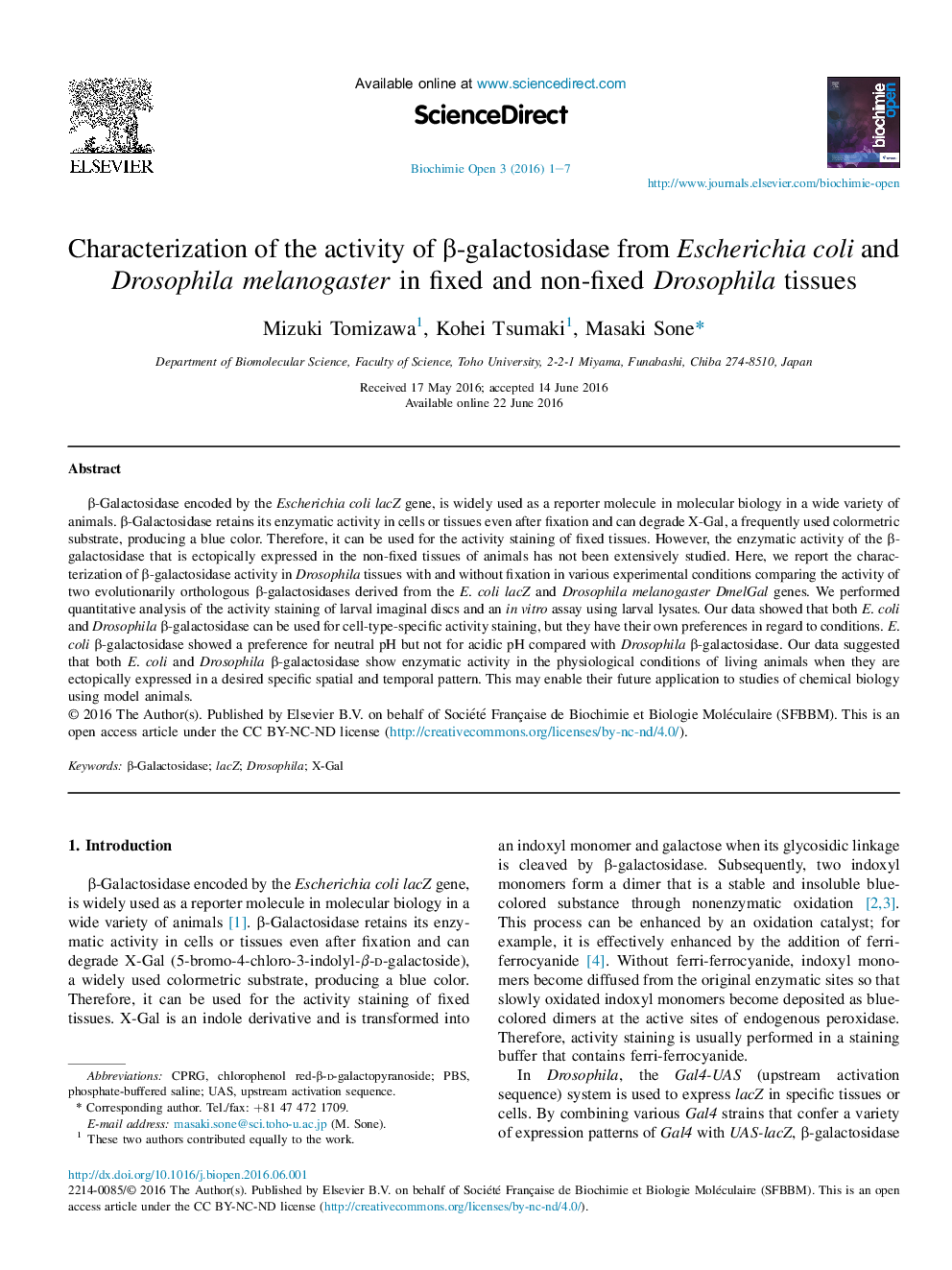| Article ID | Journal | Published Year | Pages | File Type |
|---|---|---|---|---|
| 1953591 | Biochimie Open | 2016 | 7 Pages |
•We created a transgenic fly to express Drosophila endogenous β-galactosidase.•We compared the properties of β-galactosidase molecules from Escherichia coli and Drosophila.•Both β-galactosidase molecules were active in both fixed and non-fixed tissues.•E. coli β-galactosidase showed a preference for neutral pH but not for acidic pH.
β-Galactosidase encoded by the Escherichia coli lacZ gene, is widely used as a reporter molecule in molecular biology in a wide variety of animals. β-Galactosidase retains its enzymatic activity in cells or tissues even after fixation and can degrade X-Gal, a frequently used colormetric substrate, producing a blue color. Therefore, it can be used for the activity staining of fixed tissues. However, the enzymatic activity of the β-galactosidase that is ectopically expressed in the non-fixed tissues of animals has not been extensively studied. Here, we report the characterization of β-galactosidase activity in Drosophila tissues with and without fixation in various experimental conditions comparing the activity of two evolutionarily orthologous β-galactosidases derived from the E. coli lacZ and Drosophila melanogaster DmelGal genes. We performed quantitative analysis of the activity staining of larval imaginal discs and an in vitro assay using larval lysates. Our data showed that both E. coli and Drosophila β-galactosidase can be used for cell-type-specific activity staining, but they have their own preferences in regard to conditions. E. coli β-galactosidase showed a preference for neutral pH but not for acidic pH compared with Drosophila β-galactosidase. Our data suggested that both E. coli and Drosophila β-galactosidase show enzymatic activity in the physiological conditions of living animals when they are ectopically expressed in a desired specific spatial and temporal pattern. This may enable their future application to studies of chemical biology using model animals.
